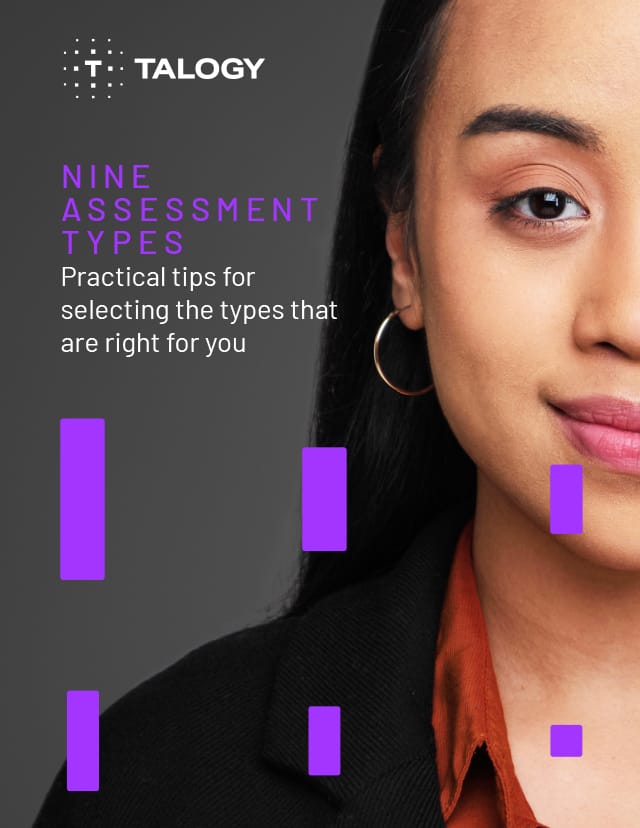Written by Steven Jarrett, PhD, Senior Director of Consulting
What defines an effective selection process? That can depend greatly on who you ask within an organisation. Specifically, if you ask operations, it is a system that hires top quality candidates quickly, and for human resources it is a system that is easy to administer and allows them to track and process candidates quickly. However, from a legal perspective, an effective hiring process is one that ensures legal defensibility, meaning it minimises the risk of legal challenges or lawsuits for the organisation. Some may believe that these are differing goals, but in our opinion it is possible to build a strong selection system that meets everyone’s needs while keeping the organisation legally safe.
5 ways to improve the legal defensibility of your hiring process
Here are five recommendations on how your organisation can create or improve a legally defensible hiring system that can also hire effective individuals quickly.
1. Improve consistency
Have you ever had an employee insist that they had the perfect candidate for an open position only to hire this person and find out that they are not a good fit for the role or company? While referrals can be fruitful, it’s important that all candidates be put through the same hiring hurdles for a particular role.
Inconsistent practices and making exceptions are major concerns for ensuring your system is legally defensible. It is important that the process, tools, assessments, and competencies all stay consistent throughout the hiring process and that all candidates are required to meet the same criteria.
2. Review the process, and often
It is one thing to hold all of your candidates to the same criteria, but it is also important that those criteria are job relevant and legally defensible. Does your position require a high school diploma or college degree? Does it dictate that a person is able to work on their feet for eight hours a day? Do they need to hold a particular certification? And perhaps more important, what job duties make these criteria necessary for a job candidate to possess?
Things change and so should your hiring processes to ensure that all of the questions that you are asking are job relevant. In order to identify the necessary changes, it’s a good idea to evaluate your selection process each time you post a position, and particularly if you have not posted the position in some time.
3. Review the laws
Just as criteria and aspects of the job change, so do laws and regulations. It is not always easy to stay up to date on the latest law changes, but it is important to be in conversation with internal or external legal departments to understand the changes and how they may affect the legal defensibility of your hiring process.
4. Conduct a job analysis
How does one know what is and what is not relevant for a specific position? Does the individual need to be able to lift a certain amount of weight? Do they need good attention to detail? The easiest way to ensure that you are asking and assessing job relevant concepts is to conduct a job analysis.
The purpose of a job analysis is to review positions to understand the specific elements of a job and the essential competencies necessary for successful performance in that position. Job analytics represent an important element for legal defensibility but also ensure that your organisation is hiring individuals who are capable of doing the necessary elements of the position.
5. Seek out an external review
The closer we are to something, the harder it is to identify the flaws and areas for improvement. Have you ever read a deliverable what felt like a million times only to send it out and immediately notice a typo? Had you utilised a colleague with a fresh set of eyes to review the content before hitting the send button, perhaps they could have spotted the error that you missed.
This can be the case for selection systems as well. Often, we see companies who rely on the motto of ‘we have always done it this way’ to determine if a process is effective or not. There are a lot of organisations in history that have relied on that so-called wisdom – there are just not a lot of those companies that are still around today. Allow an expert unaffiliated with your company with an unbiased view to critically evaluate your hiring practices. This added step will likely improve both the performance and defensibility of your hiring system.
Be proactive in your defensibility practices
Companies all too often build in these legally defensible policies, practices, and procedures when it is too late – when they have no choice as they have already lost or settled a lawsuit. Learn from the mistakes of these predecessors and take action now to ensure your hiring practices have the highest degree of legal defensibility.




